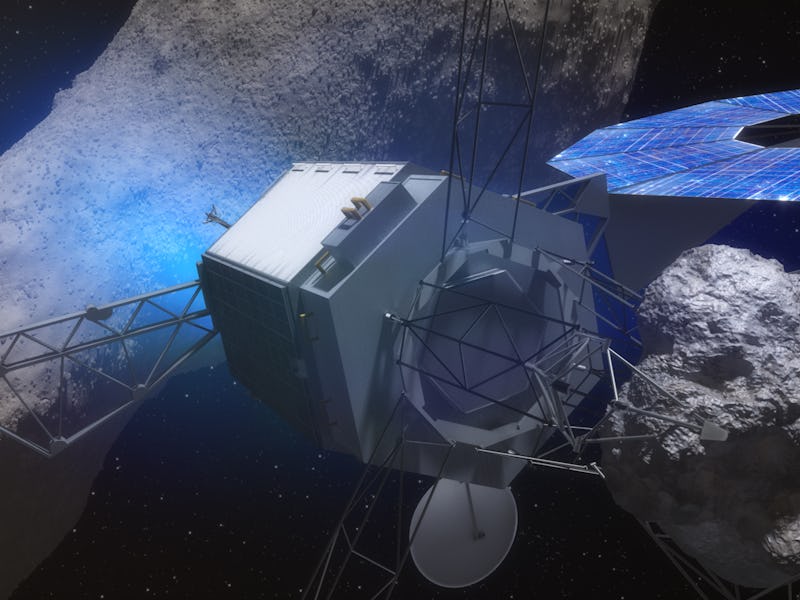NASA Officially Cancels the Asteroid Redirect Mission
Congress and the White House finally win out.

NASA officially initiated an “orderly closeout” of the Asteroid Redirect Mission on Tuesday, during a meeting of the Small Bodies Assessment Group (SBAG), according to SpaceNews. This is just a couple months after the release of the White House’s proposed budget of 2018 effectively declared the Trump administration’s intention to withdraw all funding for the mission starting next year.
“We are in an orderly closeout phase, capturing all the good work that has been done across the team, and transitioning activities as appropriate to other potential missions or archived for future use,” said ARM program director Michele Gates.
The idea to build and launch a spacecraft towards an asteroid, pick up a small boulder off its surface, and steer it back to the moon so it could be dropped in lunar orbit — such a mission was never going to be an easy sell to Congress. NASA did it’s best to explain why ARM was a good idea: among those potential benefits was the opportunity to test out solar electric propulsion (SEP) technologies, as well as the chance to learn more information about these rocks in anticipation for helping push forward the reality of asteroid mining.
It sucks, but the ax was drawn a long time ago, and it was falling pretty fast. Congress, particularly its Republican members, were always intensely skeptical about the practical benefits of such an expensive mission, and they made that opinion abundantly clear to NASA several times. Donald Trump’s election to the executive office basically gave Congress the chance to nix the mission once and for all.
But NASA isn’t planning to throw the baby out with the bathwater. NASA is considering proposals for implementing and testing SEP on other planned missions (a key technology in NASA’s Mars mission program), as well as thinking of ways to install some of the robotic technologies being developed for ARM onto other missions.
“The technologies that we were developing, the capabilities that we were developing in ARM, were not mission-specific,” said Dan Mazanek, ARM mission investigator. “I haven’t come up with anything that we were doing that was not applicable to a wide variety of missions.”
There was previously speculation that SpaceX would be able to salvage the mission to some extent by using the company’s Red Dragon mission to bring back extraterrestrial rock samples for study as a substitute science project.